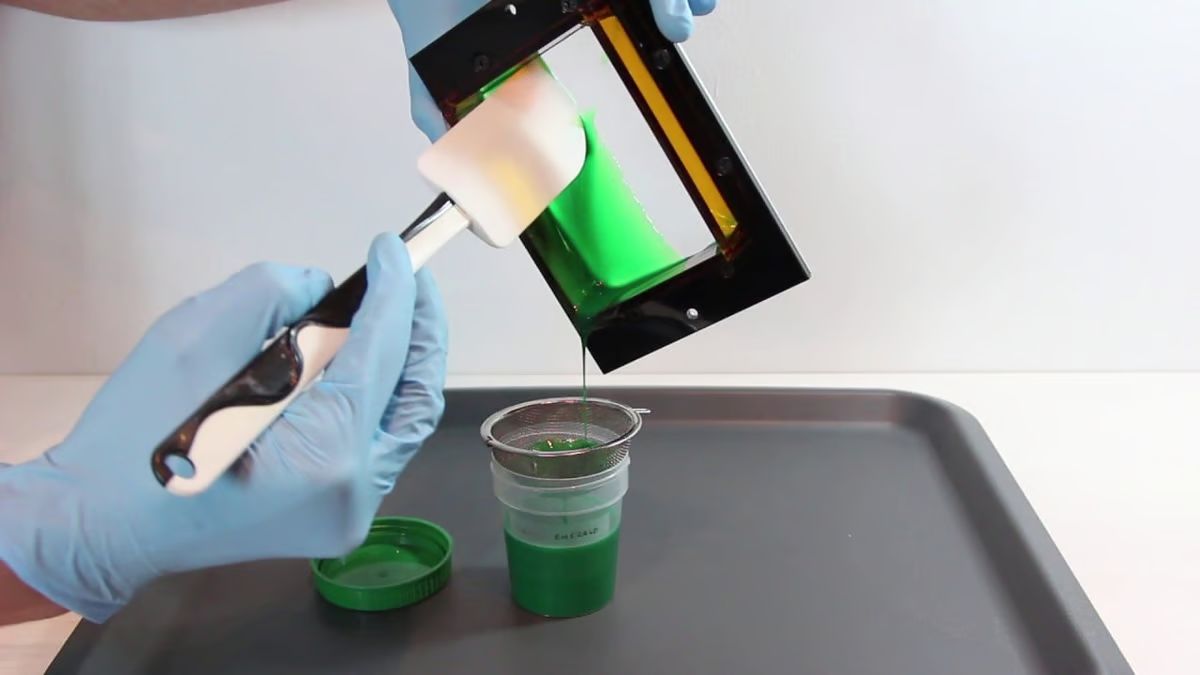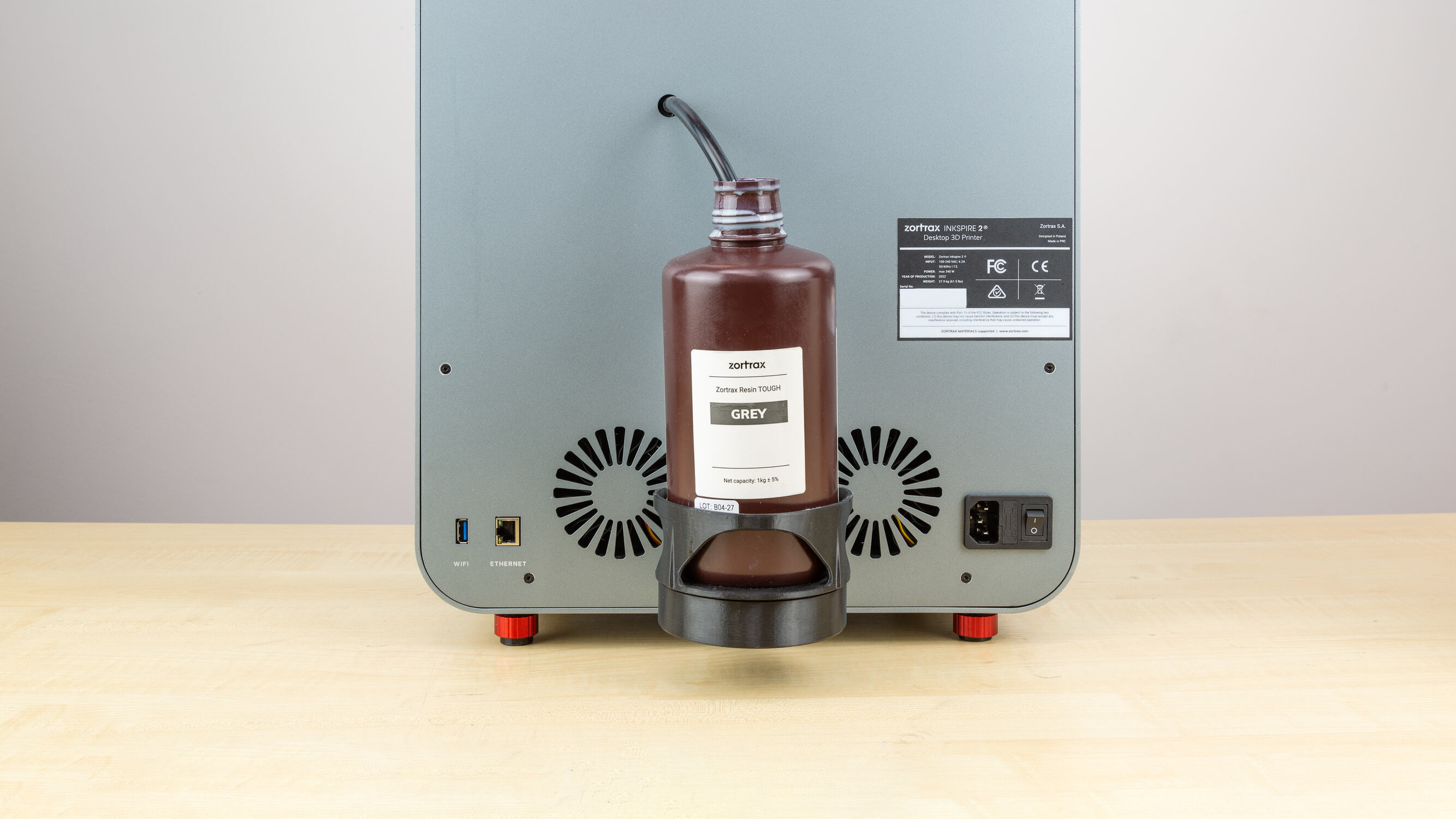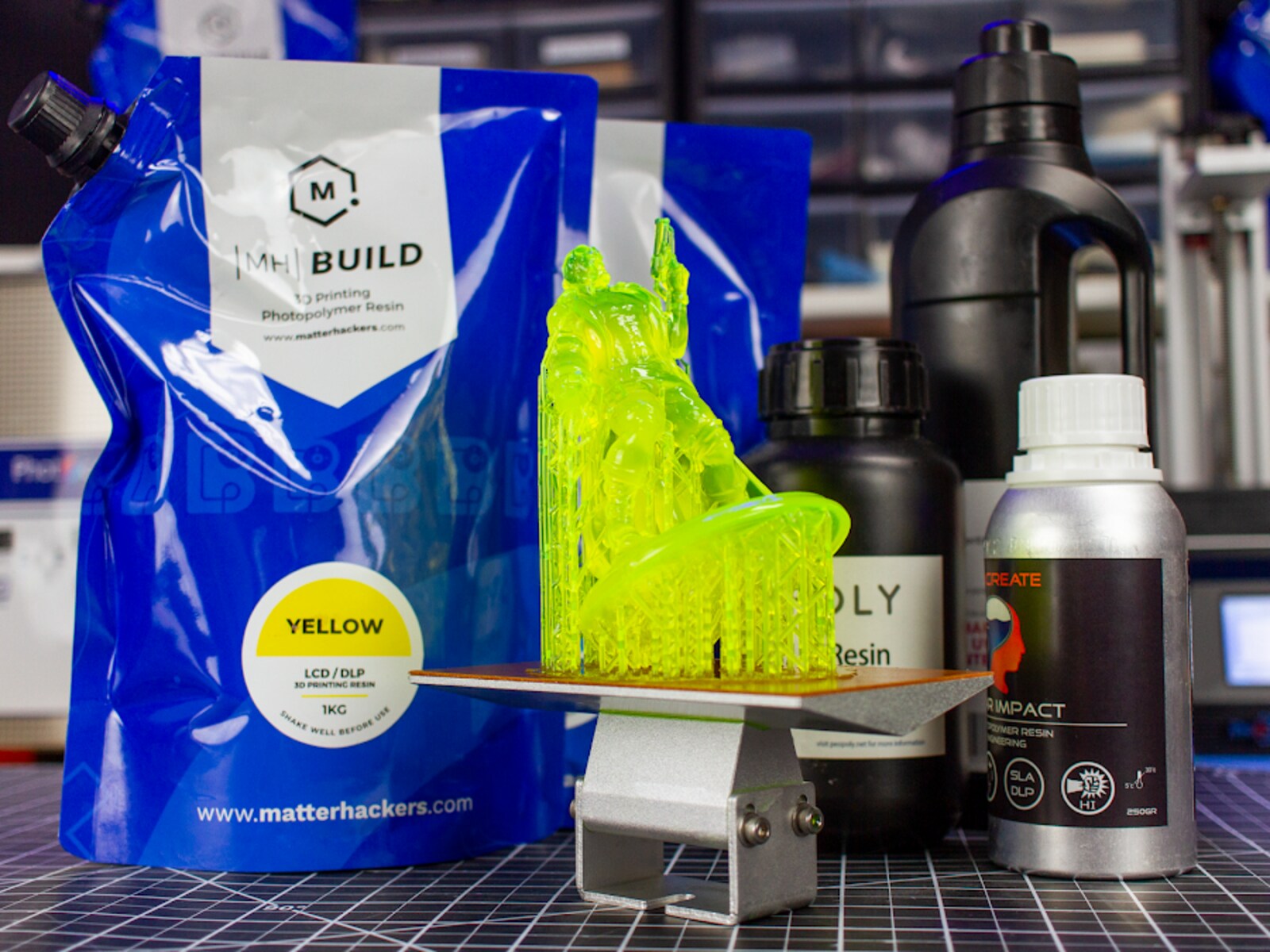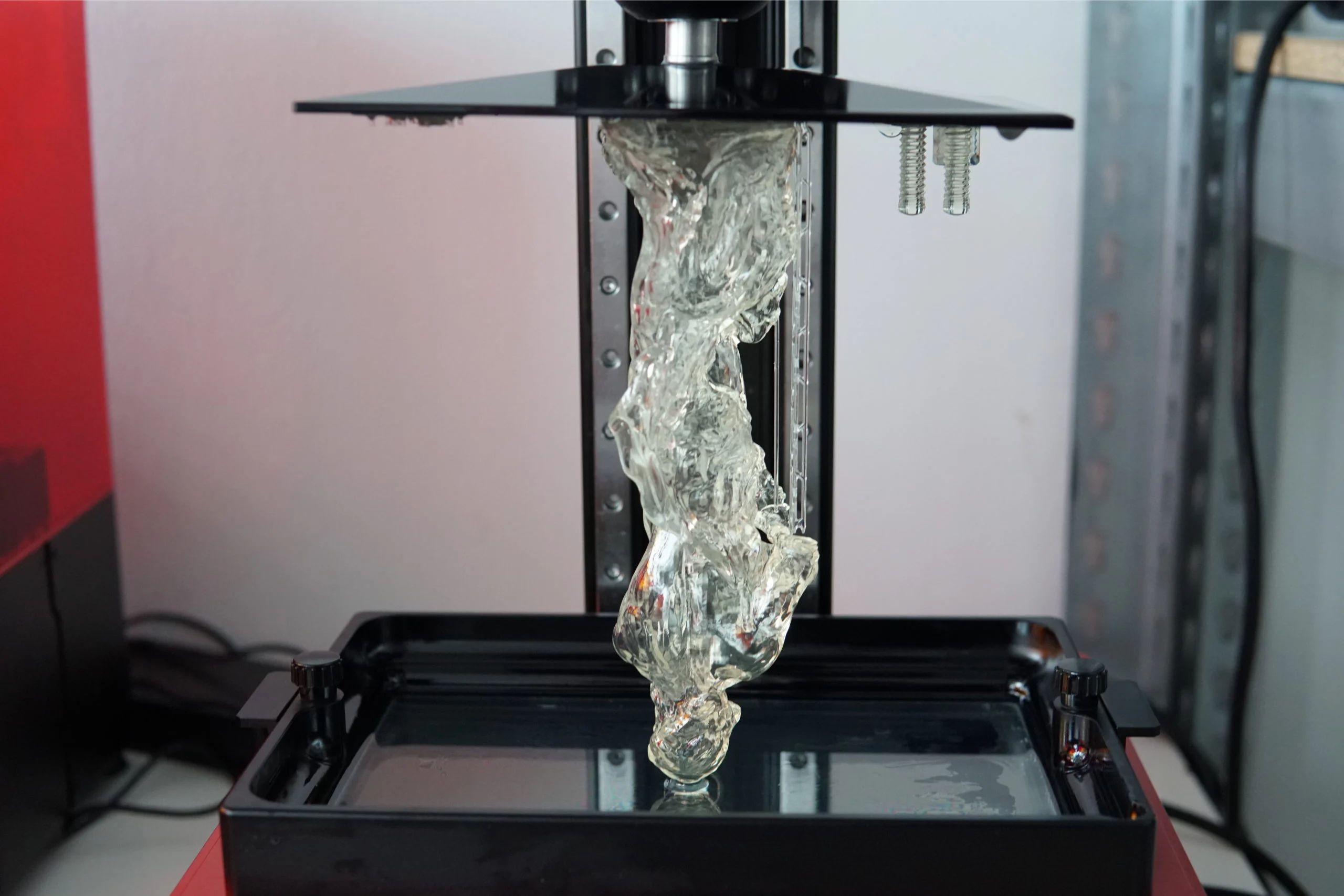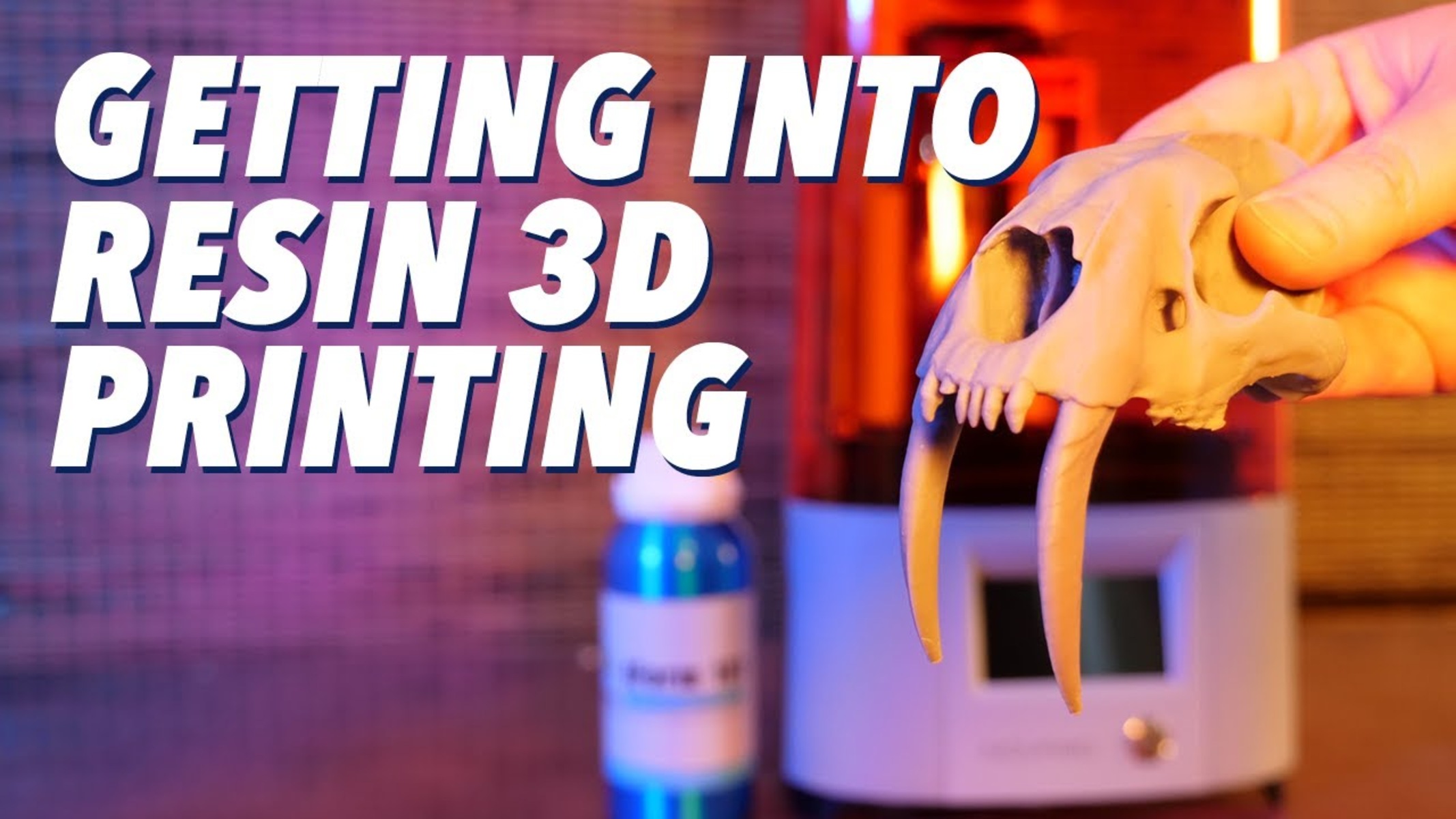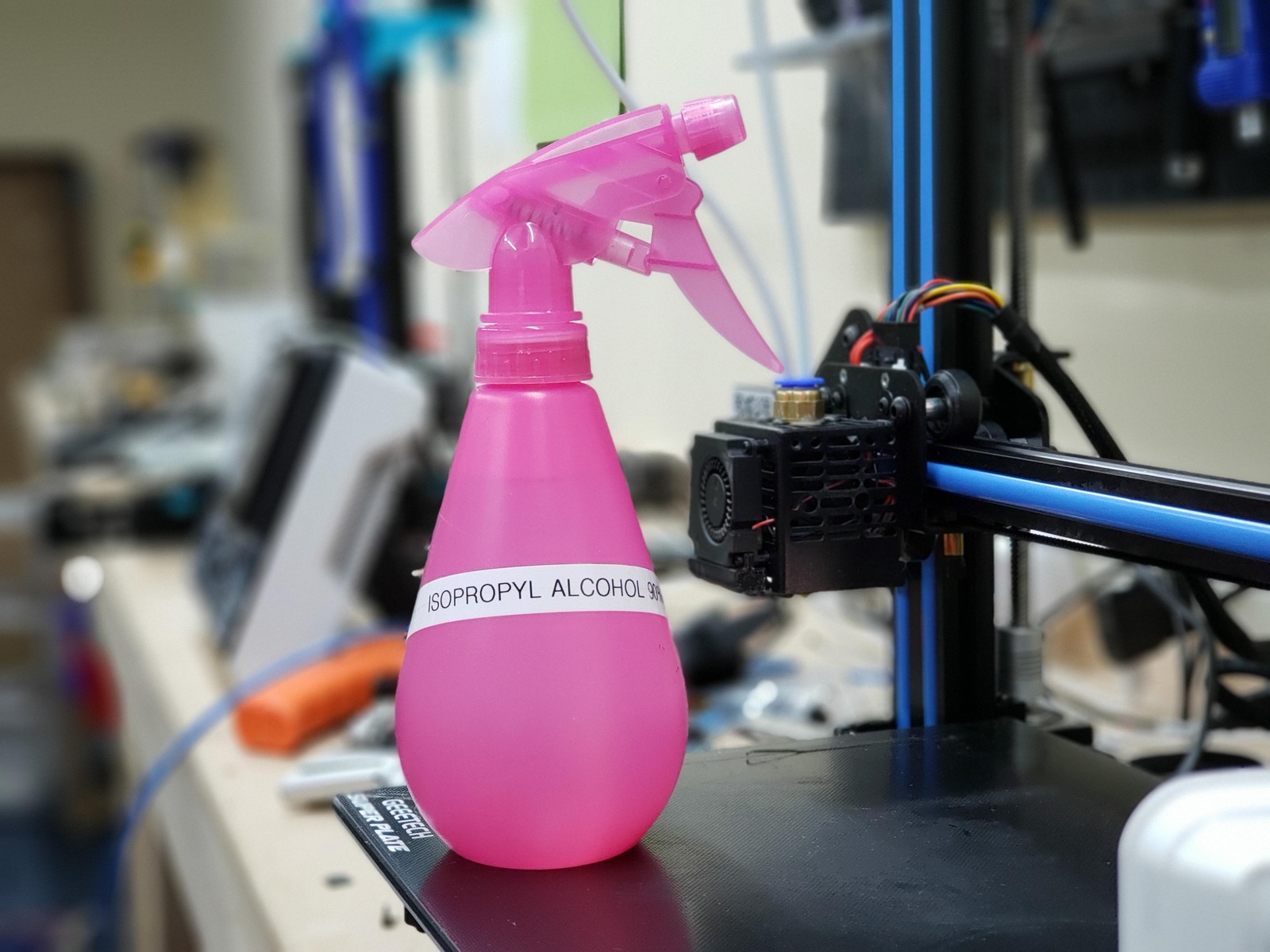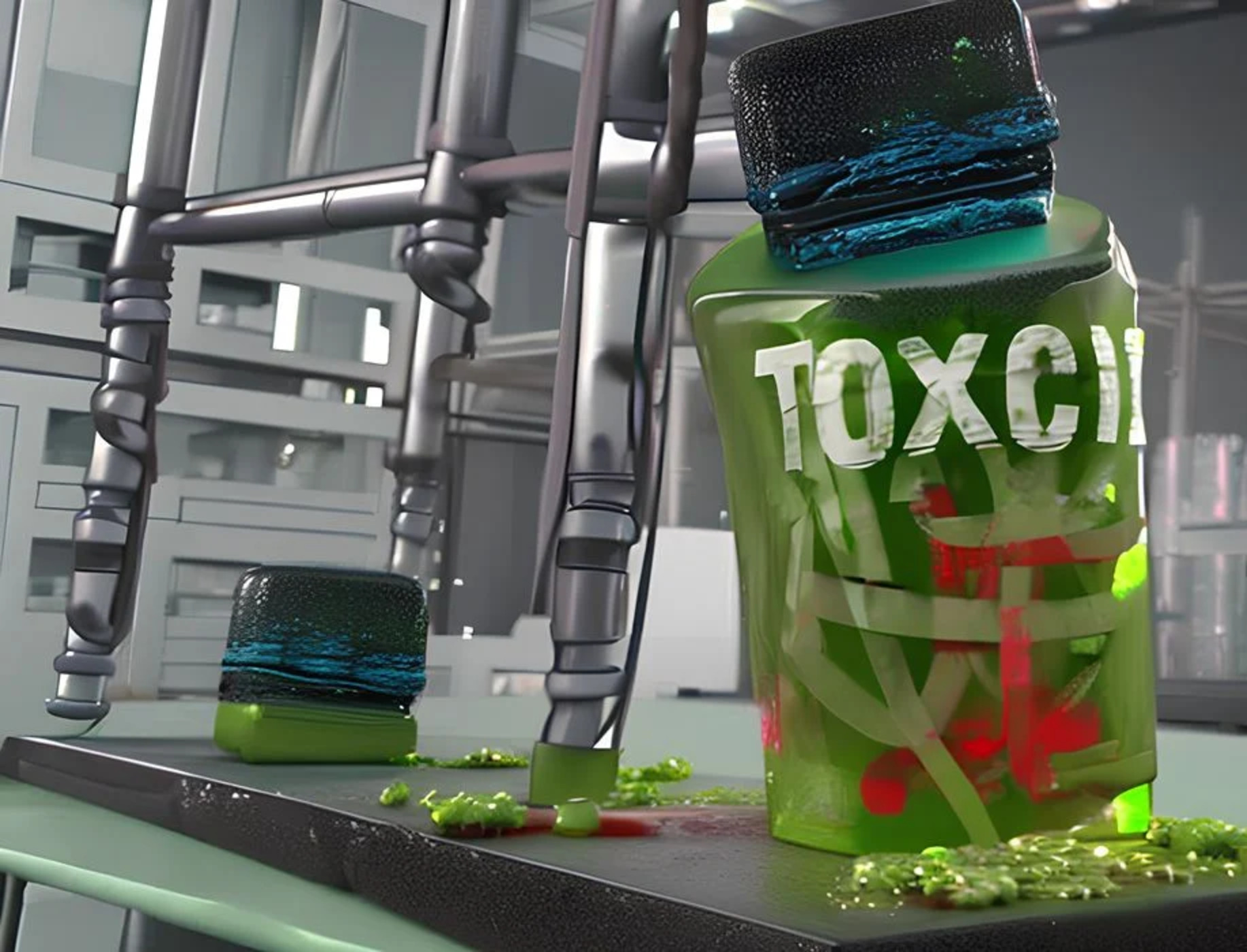Introduction
Welcome to the world of 3D printing! As a 3D printer enthusiast, you’re likely familiar with the versatile and exciting possibilities that resin printing brings to the table. However, it’s important to not overlook the proper disposal of 3D printer resin. While it may be tempting to simply throw away unused resin or rinse cured resin down the sink, it’s essential to adopt responsible practices to protect the environment and comply with legal regulations.
Proper disposal of 3D printer resin is not only a matter of environmental consciousness but also of safety. Resins used in 3D printing often contain toxic chemicals that can be harmful if mishandled. By following the correct disposal procedures, you can minimize health risks and prevent pollution.
This article will guide you through the various aspects of disposing of 3D printer resin. We will explore the legal considerations, safety precautions, and the reasons why proper disposal is crucial. We’ll also delve into the proper storage methods and discuss the available recycling options. Furthermore, we’ll touch upon local disposal regulations and provide step-by-step instructions on how to dispose of both unused and cured resin.
By the end of this article, you’ll have a clear understanding of how to dispose of 3D printer resin responsibly and safely. Let’s dive in and explore the world of proper resin disposal!
Legal Considerations
When it comes to disposing of 3D printer resin, it’s crucial to be aware of the legal considerations. Different countries and regions have specific regulations in place to govern the disposal of hazardous substances, including resin. Violating these regulations can result in fines and penalties, so it’s important to familiarize yourself with the rules applicable in your area.
First and foremost, check if there are any specific laws or regulations regarding the disposal of resin in your locality. Researching and understanding the legal requirements will ensure that you handle and dispose of resin in compliance with the law.
In some areas, resin may be classified as hazardous waste and can only be disposed of at designated disposal facilities. These facilities are equipped to handle and treat hazardous materials properly, minimizing the environmental impact and ensuring safe disposal. It is essential to contact your local waste management authorities or visit their website to get information on designated disposal facilities near you.
Keep in mind that improper disposal of resin can have severe consequences. It can contaminate water sources, soil, and negatively impact ecosystems. Additionally, it can harm wildlife and pose health risks to humans. By adhering to the legal regulations for disposing of resin, you are actively contributing to the preservation of the environment and protecting public health.
Lastly, be aware that the legal landscape surrounding resin disposal may change over time. Stay updated with any amendments or new regulations related to resin disposal in your area. Being informed will help you adapt your disposal practices accordingly and serve as a responsible user of 3D printer resin.
Safety Precautions
When dealing with 3D printer resin, it’s vital to prioritize safety. Resins used in 3D printing often contain hazardous chemicals that can pose health risks if not handled properly. By taking appropriate safety precautions, you can protect yourself and those around you from potential harm.
The first step in ensuring safety is to wear the appropriate personal protective equipment (PPE). This typically includes nitrile gloves, safety goggles, and a lab coat or protective clothing. These items will safeguard your skin, eyes, and clothing from coming into direct contact with the resin.
Additionally, it’s essential to work in a well-ventilated area or use a fume hood. Resins can release fumes that can be harmful when inhaled, so adequate ventilation is crucial to minimize exposure. If possible, consider using a ventilation system or opening windows to improve air circulation.
When handling uncured resin, be cautious and avoid contact with bare skin. Some resins may cause skin irritation or allergic reactions. In case of accidental skin contact, promptly wash the affected area with soap and water. If irritation persists, seek medical attention.
If resin comes into contact with your eyes, immediately rinse them with water for at least 15 minutes and seek medical assistance. Remember to avoid rubbing your eyes, as this can exacerbate the situation.
Never consume or ingest the resin, as it can be toxic and potentially harmful to your health. Store the resin away from food, beverages, and areas where it could accidentally be mistaken for something edible.
When disposing of resin, be mindful of the containers used for storage. Resin containers may have residue that can adhere to the walls, so handle them with care to avoid spillage. Ensure that containers are properly sealed to prevent leakage or accidental exposure.
Lastly, always clean up any spills or drips of resin immediately. Use disposable absorbent materials, such as paper towels or absorbent pads, to soak up the resin. Place the used absorbent materials in a sealed bag or container for proper disposal.
By following these safety precautions, you can minimize the risks associated with handling and disposing of 3D printer resin. Remember, safety should always be a top priority to ensure a smooth and incident-free experience.
Reasons for Proper Disposal
Proper disposal of 3D printer resin is essential for several important reasons. It protects the environment, prevents pollution, and ensures the health and safety of individuals.
One of the primary reasons for proper disposal is environmental preservation. Resin contains various chemicals that, if not disposed of correctly, can contaminate soil, water sources, and ecosystems. These chemicals can have a detrimental impact on aquatic life, plants, and animals, disrupting fragile ecosystems. By disposing of resin responsibly, you contribute to maintaining a healthy and balanced environment.
Proper disposal also helps prevent pollution. The incorrect disposal of resin can lead to its entering waterways, either through improper rinsing or disposal in drains. This contamination can harm aquatic organisms and compromise the quality of drinking water sources. Moreover, toxins released from resin can seep into the ground and contaminate soil, affecting plant life and potentially entering the food chain.
Disposing of resin in accordance with the law and established guidelines ensures compliance with local regulations. Failure to comply with these regulations can result in legal consequences and penalties. By adhering to proper disposal practices, you demonstrate responsible and ethical behavior as a 3D printer user.
Another crucial reason for proper disposal is personal safety. Resins used in 3D printing often contain toxic chemicals that can cause harm if not handled correctly. Disposing of resin in a safe and appropriate manner minimizes the risk of accidental exposure and potential health issues for individuals involved in the disposal process.
Furthermore, proper disposal practices also extend to the handling of resin containers. Residue left in containers can pose a risk if not properly cleaned or disposed of. By following the recommended methods for cleaning and disposing of containers, you prevent potential spills or leakage that can harm the environment and individuals.
By understanding and recognizing the reasons for proper disposal, you can take the necessary steps to ensure that your resin waste is handled correctly. Adopting responsible disposal practices protects the environment, prevents pollution, complies with regulations, and prioritizes personal safety.
Proper Storage
When it comes to 3D printer resin, proper storage is key to maintaining its quality and minimizing potential safety risks. Storing resin correctly helps prolong its shelf life, prevents contamination, and ensures a smooth printing experience.
The first consideration for resin storage is to keep it in a cool and dry environment. Extreme temperatures can affect the chemical composition and consistency of the resin, leading to inconsistencies in printing results. Ideally, the storage area should have a temperature between 15°C and 25°C (59°F and 77°F). Avoid exposing the resin to direct sunlight or heat sources as this can accelerate degradation.
To prevent contamination, it is important to store resin away from dust, debris, and other contaminants. Resins are susceptible to absorbing particles from the air, resulting in impurities in the print. Keeping the resin in a sealed container or the original bottle with the lid tightly closed helps maintain its cleanliness and purity.
Consider storing the resin in a dedicated storage cabinet or shelf that is exclusively used for resin and related materials. This helps minimize the risk of accidental exposure or cross-contamination with other substances. Label the storage area appropriately to avoid confusion and ensure that it is easily identifiable as the resin storage space.
When choosing storage containers for resin, opt for those specifically designed for 3D printer resin. These containers often have light-blocking properties to protect the resin from UV exposure, which can cause premature curing. Ensure that the containers are clean and free from any previous residue that may contaminate the new resin batch.
Remember to keep resin away from food, beverages, and areas where it could be mistaken for something edible. Clearly mark the containers or shelf to indicate that they contain hazardous materials.
Regularly inspect the resin for any visible signs of degradation, such as discoloration or changes in viscosity. If the resin appears to have deteriorated, it is recommended to dispose of it properly and replace it with a fresh batch. Continuously monitoring the quality of stored resin helps ensure optimal printing results.
By following these guidelines for proper storage, you can preserve the quality and integrity of your 3D printer resin. Ensuring that resin is stored in a suitable environment, free from contaminants and at the correct temperature, will contribute to successful printing outcomes while minimizing safety risks.
Recycling Options
As responsible users of 3D printer resin, it’s essential to explore recycling options to minimize waste and reduce the environmental impact of resin disposal. While it may not always be possible to recycle resin directly, there are alternative recycling methods and initiatives to consider.
One option is to explore resin-specific recycling programs or services provided by recycling facilities. In some areas, there are specialized facilities that can handle and process 3D printer resin. These facilities have the necessary equipment and expertise to recycle resin waste safely. Research local recycling facilities or reach out to waste management authorities to inquire about available resin recycling options in your region.
Another approach is to look into resin-specific resin reclamation services. These services collect used or unwanted resin and process it to remove impurities and contaminants, creating recycled resin that can be re-used in future 3D printing projects. Recycling resin in this way not only reduces waste but also conserves resources and promotes a circular economy within the 3D printing community.
If resin recycling options are limited or not readily available in your area, consider exploring resin alternatives that are more environmentally friendly. There are resin-based materials on the market that are biodegradable or derived from renewable resources. Switching to these eco-friendly alternatives can help reduce the environmental impact associated with resin disposal.
Engaging with online forums and communities dedicated to 3D printing can also provide valuable insight into innovative recycling methods. Many enthusiasts and experts within the community have developed creative ways to recycle or repurpose resin waste. From experimenting with resin-specific recycling techniques to upcycling resin waste into artistic projects, exploring these ideas can contribute to reducing the environmental footprint of resin disposal.
It’s important to note that not all resins are recyclable or have recycling options available. Some resins may contain additives or components that make them unsuitable for recycling. It’s necessary to check the compatibility of the resin you’re using with recycling processes and consult with recycling experts or facilities for guidance.
By exploring recycling options, striving to use eco-friendly alternatives, and participating in resin recycling initiatives, you can actively contribute to the sustainable management of 3D printer resin waste. Recycling not only reduces the environmental impact but also supports the development of a more sustainable 3D printing industry.
Local Disposal Regulations
When it comes to disposing of 3D printer resin, it’s crucial to understand and comply with the local disposal regulations in your area. Different countries, states, and municipalities have specific guidelines and requirements for disposing of hazardous materials, including resin.
Start by researching and familiarizing yourself with the local regulations governing the disposal of resin. Check with your local waste management authorities or environmental agencies to obtain the relevant information. They can provide you with specific guidelines, restrictions, and disposal methods that align with the local regulations.
It’s important to note that certain types of resin may be classified as hazardous waste, requiring specific disposal procedures. There may be designated disposal facilities or collection points where you can safely dispose of hazardous resin waste. These facilities are equipped to handle and treat hazardous materials properly, minimizing the environmental impact and ensuring safe disposal. Ensure that you follow the recommended disposal methods for hazardous materials as stipulated by the local regulations.
In some cases, you may need to obtain permits or approvals for the disposal of certain volumes or types of resin waste. Check with the appropriate authorities to determine if any permits are required and the process for obtaining them. Non-compliance with disposal regulations can result in fines and penalties, so it’s essential to adhere to the guidelines set forth by the local authorities.
Keep in mind that disposal regulations can change over time. Stay updated with any amendments or new regulations related to resin disposal in your area. This information can usually be found on the official websites of waste management authorities or environmental agencies. Remaining informed about the current disposal regulations ensures that you are up to date with the proper practices and can adjust your disposal methods accordingly.
Lastly, consider reaching out to local 3D printing communities or forums for additional insights and experiences regarding resin disposal. Other 3D printer enthusiasts in your area may have valuable knowledge and advice based on their own interactions and experiences with local authorities. Sharing information within the community can be helpful in navigating the intricacies of local disposal regulations.
By understanding and adhering to the local disposal regulations, you can ensure that your disposal practices are in compliance with the law. Proper disposal not only protects the environment but also contributes to the safety and well-being of the community as a responsible user of 3D printer resin.
How to Dispose of Unused Resin
Disposing of unused 3D printer resin properly is essential to prevent environmental contamination and comply with disposal regulations. Here’s a step-by-step guide on how to dispose of unused resin:
- Check the local regulations: Before disposing of unused resin, familiarize yourself with the local disposal regulations. Different regions may have specific guidelines and requirements.
- Minimize waste: To reduce the amount of unused resin that needs to be disposed of, carefully calculate the amount required for each print job and only mix the necessary quantity. Avoid excess resin that may go to waste.
- Cure the resin: To make disposal easier and safer, consider using a UV curing chamber or sunlight to cure the unused resin. This process solidifies the resin, allowing for proper disposal without the risk of liquid spillage.
- Place cured resin in a sealed container: Once the resin is cured, transfer it to a designated container with a secure lid. Ensure the container is properly sealed to prevent any leakage during transportation and disposal.
- Contact local waste management authorities: Reach out to your local waste management authorities for instructions on the proper disposal of cured resin. They may provide specific guidelines or direct you to designated disposal facilities.
- Transport the container safely: If permitted, transport the sealed container of cured resin to the designated disposal facility following the recommended safety precautions. Use appropriate protective equipment and handle the container with care to prevent any accidents or spillage.
- Dispose of the resin at a designated facility: Follow the instructions provided by the disposal facility to safely and correctly dispose of the cured resin. They will have the necessary infrastructure and processes to handle hazardous materials.
Remember, it’s important to follow the local regulations and guidelines regarding the disposal of unused resin. By taking the necessary precautions and properly disposing of unused resin, you contribute to environmental conservation and protect the well-being of both humans and wildlife.
How to Dispose of Cured Resin
Disposing of cured 3D printer resin properly is crucial to protect the environment and ensure compliance with disposal regulations. Here’s a step-by-step guide on how to dispose of cured resin:
- Check local regulations: Familiarize yourself with the local regulations regarding the disposal of cured resin. Different regions may have specific guidelines and requirements.
- Prepare a suitable container: Find a sturdy, sealable container that is appropriate for storing and transporting the cured resin. Ensure that the container is resistant to potential leaks or spillage.
- Carefully scrape and collect the resin: Use a scraper or similar tool to carefully collect the cured resin from the printing platform or any other surfaces. Take precautions to avoid any accidental contact or inhalation of resin dust.
- Place the resin in the container: Transfer the collected cured resin into the prepared container, ensuring that it is tightly sealed. This will prevent any potential spills or exposure during transportation.
- Contact local waste management authorities: Get in touch with your local waste management authorities to obtain instructions on the proper disposal of cured resin. They may provide specific guidelines or direct you to designated disposal facilities.
- Transport the container safely: If allowed, transport the sealed container of cured resin to the designated disposal facility following the recommended safety precautions. Use appropriate protective equipment and handle the container with care to prevent any accidents or leakage.
- Dispose of the resin at the designated facility: Follow the instructions provided by the disposal facility for the proper disposal of the cured resin. They will have the necessary infrastructure and processes in place to handle hazardous materials safely.
It’s essential to adhere to the local regulations and guidelines when disposing of cured resin. By taking these necessary precautions and disposing of the resin correctly, you contribute to environmental preservation and ensure the well-being of both humans and wildlife.
Disposing of Resin Containers
Properly disposing of resin containers is an important part of responsible resin management. Resin containers may have residue or remnants of cured or uncured resin, and it’s crucial to handle their disposal with care to prevent environmental contamination. Here are some steps to follow when disposing of resin containers:
- Allow the resin container to fully cure: If there is any leftover resin remaining in the container, allow it to fully cure by exposing it to UV light or sunlight. This ensures that the resin hardens and becomes easier to handle and dispose of.
- Scrape off any remaining resin: Once the resin has cured, use a scraper or a similar tool to scrape off any remaining resin from the container’s walls and bottom. Collect the scraped resin and transfer it to a container meant for cured resin disposal, following the appropriate disposal procedures.
- Rinse the container: Rinse the container with a suitable solvent or cleaning agent, following the recommended safety guidelines. This helps remove any residue and reduces the environmental impact of the container’s disposal. Ensure that the rinsate is collected and disposed of properly.
- Check local regulations: Research and understand the local regulations for disposing of plastic containers. Different regions may have specific guidelines concerning the recycling or disposal of plastic materials. Contact local waste management authorities to obtain accurate information on the appropriate disposal methods.
- Recycle if possible: If recycling options for plastic containers are available in your area, explore the possibility of recycling the resin containers. Some recycling facilities may accept plastic containers, but it’s important to confirm their acceptance criteria and guidelines.
- Dispose of the containers: If recycling is not an option, dispose of the resin containers following the local regulations. You may need to place them in designated recycling bins or follow specific instructions provided by waste management authorities for plastic container disposal.
- Consider reusing or repurposing the containers: Before discarding the resin containers, consider if they can be reused or repurposed. They can be utilized for storing other materials or as organization tools in your workspace. Get creative and find alternative uses for the containers to reduce waste.
By following these steps and complying with local regulations, you can ensure that resin containers are disposed of responsibly. Properly handling the disposal of resin containers contributes to waste reduction, environmental preservation, and supports a sustainable approach to resin management.
Conclusion
Proper disposal of 3D printer resin is not only a legal and environmental responsibility but also crucial for ensuring the safety of individuals and protecting the well-being of our planet. By following the guidelines and recommendations outlined in this article, you can contribute to a more sustainable and responsible approach to resin disposal.
Understanding the legal considerations surrounding resin disposal in your local area is the first step. Adhering to the regulations set forth by waste management authorities and disposal facilities ensures compliance and prevents potential penalties. It is essential to familiarize yourself with the specific requirements and disposal methods applicable to cured and unused resin.
Safety precautions should always be prioritized when handling resin. Wearing protective equipment, working in well-ventilated areas, and ensuring proper storage and transportation minimize the risk of exposure and accidents. By taking these precautions, you can protect yourself and others while handling resin waste.
Proper storage is key to maintaining resin quality and preventing contamination. Store resin in a cool and dry environment, away from dust and debris. Use suitable containers and labeling to organize and identify resin storage areas. Regularly inspect resin for any signs of degradation to ensure optimal printing results.
Recycling options should always be explored to minimize waste. Look for resin-specific recycling programs, resin reclamation services, or eco-friendly resin alternatives. Engaging in online forums and communities can provide valuable insights into innovative recycling methods developed by fellow 3D printing enthusiasts.
Lastly, be aware of local disposal regulations and guidelines. Research and understand the guidelines for disposing of cured resin, unused resin, and resin containers. Contact local waste management authorities to obtain accurate information on disposal procedures and facilities.
By adopting responsible disposal practices, you contribute to preserving the environment, preventing pollution, and supporting the development of a sustainable 3D printing industry. Let us all strive to be environmentally conscious and accountable in our use and disposal of 3D printer resin, ensuring a better future for generations to come.







